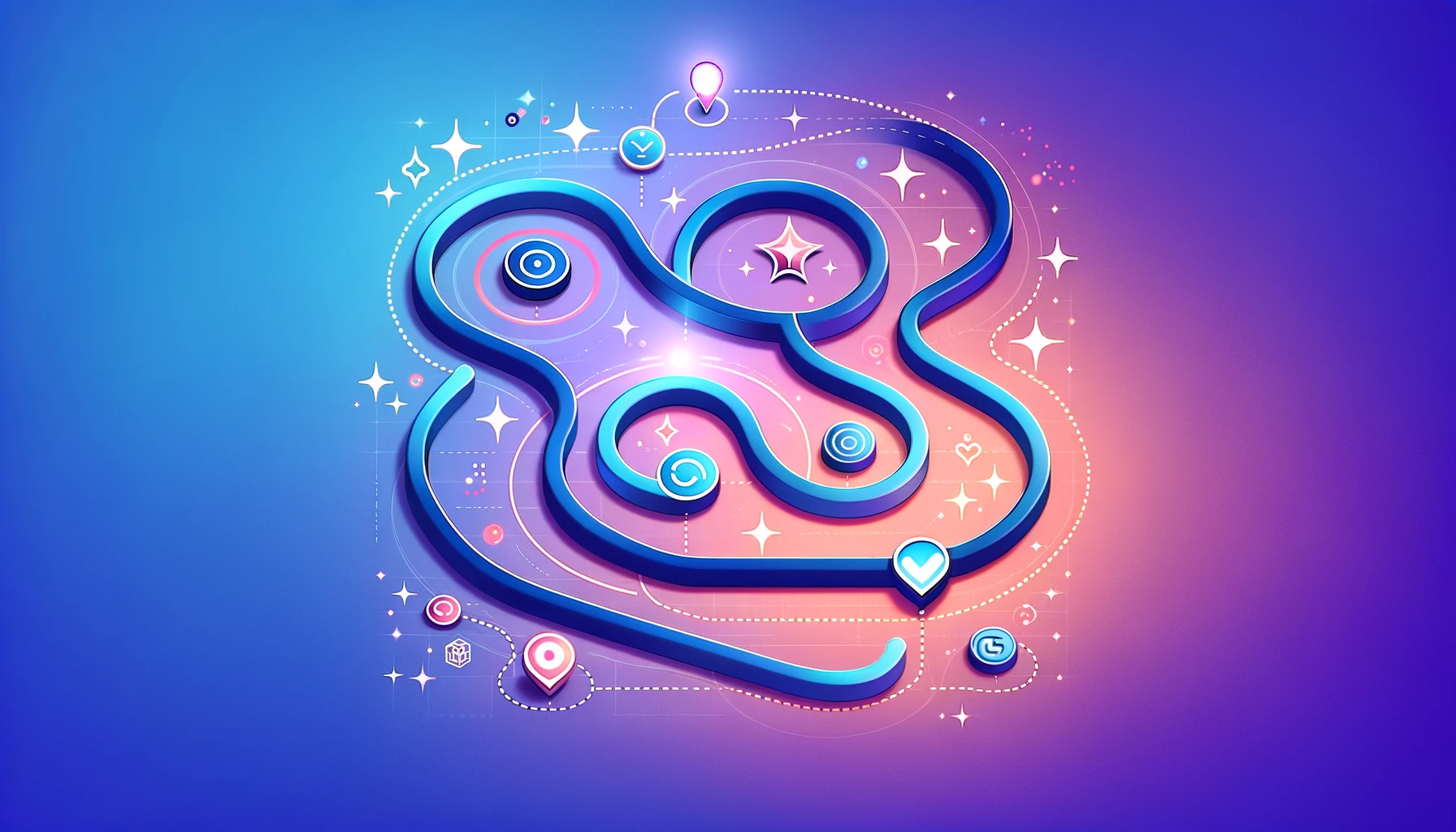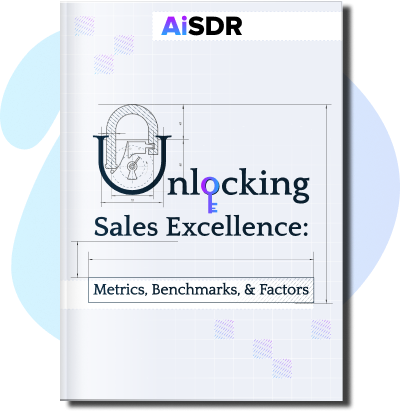The What, Why, and How of Customer Journey Mapping for Better Customer Experiences

From awareness to advocacy, here’s a closer look at mapping the customer journey
Meet Laura, a startup founder who needs to scale her sales fast to meet investor expectations. She’s not sure how to do it.
Across the country, Jake, a founder in a similar position, has been researching how AI tools could augment his sales team of one (i.e. him) on a budget.
To an AI SDR, both Laura and Jake fit the same sales persona, but with one key difference – They’re at different stages of their purchasing process (aka customer journey or buyer’s journey).
In the first example, Laura needs to be convinced that she needs a sales tool in the first place. For the second, Jake needs to know why your tool is the best and whether you offer a discount.
In today’s highly competitive market, understanding the customer journey is key to turning both Laura and Jake into satisfied customers.
A significant 39% of customers have become less patient since the pandemic, which means you must act fast to acquire and retain business. Luckily, you can use a simple tool to understand and improve your customers’ experience across the board — the customer journey map.
In this article, we’ll discuss the concept and importance of the customer journey and delve into how customer mapping will help you improve the CX for every lead and buyer.
What is a customer journey?
A customer journey is the series of steps a person follows, from understanding that they need your product to becoming your customer and, finally, an advocate for your company.
Mapping and analyzing this journey for your leads and customers has several purposes:
- It defines the main customer touchpoints with your business and content, allowing you to focus your marketing, sales, and support efforts accordingly.
- It helps you understand the main communication channels at each journey stage so you can distribute content more effectively.
- It highlights bottlenecks at each stage, which you can fix to improve your CX.
All these things lead to improved customer experiences, more conversions, and bigger profits.
Stages of the customer journey
Every company and target audience has its own unique customer journey. Nevertheless, all journeys share the same main stages.
Awareness
“Houston, we have a problem” can serve as the motto of the Awareness stage. It’s at this point where every customer starts their journey by realizing they have a problem. They’ll start Googling, asking friends, or looking to influencers for solutions. Your main task is to provide this solution via educational content and unobtrusive recommendations.
At this stage, interconnecting channels like your blog and social media is crucial because it helps people notice your brand.
Suppose a person is looking for tips on learning a foreign language. If you sell online language courses, awareness-level content will include helpful advice for self-education and convincing but subtle reasons why language courses are effective.
Once you’ve planted the idea about courses in someone’s head, you can set up targeted ads to find your customers on social media and help them move to the next stage.
Consideration
At this customer journey stage, your potential customer closely examines your brand and services to see if you’re a match. They’ll compare you with other brands, so your job is to convince them to stick with you.
If we continue using the example of language courses, a potential customer will want to know your approach to teaching, schedule flexibility, reviews, and, of course, prices. Social media and landing pages are the best way to give them a clear description of your services, as well as short videos from lessons, educational posts, and so on.
Decision
At this stage, a potential customer has one small step left to become a customer. But this doesn’t mean you can relax. On the contrary, you’ll need to work even harder to get them across the finish line.
That means perfect customer-sales manager communication and an easy purchase process, as a lead can easily turn to your competitors if something goes wrong. Last thing you want to do is convince a customer they need your services only to let them walk away in favor of a different provider.
Honest product comparisons and tailored pricing plans are both useful here. For language courses, you could offer a free first lesson or a free trial. Email is your primary communication channel at this stage as it helps personalize communication.
Retention
When your lead is officially a customer, your job is to ensure it stays that way.
At the retention stage, the focus shifts away from customer acquisition to customer support. With 95% of consumers reporting that customer service impacts their brand loyalty, customer support plays an oversized role in retention. Still, marketing and sales have their own critical part to play in introducing customers to your other products.
Good retention strategies include sending regular emails with valuable updates and tailored discounts and promotions. For example, you can use AiSDR to help with communication at this stage by writing and sending personalized emails to promote up-sells and cross-sells based on previous customer interactions. And thanks to follow-ups on auto-pilot, no customer goes forgotten.
Advocacy
If you do everything right, your customers will move on to recommending your brand to family, friends, and colleagues. You can encourage this via different channels, such as:
- Use social media to start a promotional challenge or contest
- Email special deals to your most loyal and active customers
- Introduce a referral program via your website or app
Remember: You should always find a way to please even your most loyal customers to keep them on their journey with you.
In a nutshell, even when your customers are similar (like Jake and Laura), you need to treat them differently if they’re at different stages.
This is where techniques and tools like personas, ideal customer profiles, and segmentation step in.
Sales personas, segmentation, and the customer journey
Let’s sort out the main concepts first.
Segmentation is the process of dividing your target audience into smaller groups based on common characteristics. These characteristics usually correspond to your sales personas — fictional representations of your ideal customers that describe demographics, interests, pain points, and needs.
Both sales personas and segmentation help you clarify why people would be interested in your product and target marketing and sales efforts to suit.
With the AiSDR sales and marketing tool, targeting is pretty straightforward. Simply add it to your sales persona and it will automatically generate tailored copy for the specified segment. This ensures AiSDR will send content that’s relevant and applicable to their journey stage.
Mapping the customer journey
A customer journey map is a visual description of how a persona interacts with your business from the awareness to the advocacy stage. By accurately mapping this journey, you can visualize every touchpoint and understand how to motivate customers to choose and stick with you.
The mapping process has six main steps:
- Defining the goals of your map, e.g., to pinpoint purchasing obstacles or clarify customer touchpoints
- Researching customer journeys by using focus groups, questionnaires, or market research to understand how your audience thinks and acts
- Defining key touchpoints, such as reading blogs, watching social media content, or interacting with support services
- Compiling your research, including the journey stages and touchpoints
- Walking through the customer journey yourself to identify any obstacles and bottlenecks
- Analyzing the journey and refining your map with what you learn
By mapping the journey for every sales persona, you get a clear picture of what works and what stages and touchpoints should be improved.
That’s where metrics start coming into play.
Measuring the customer journey’s effectiveness
Considering that a customer’s journey ends the moment they stop being a customer, the best customer journeys are those that last a long time. That’s why it makes sense to measure the success or failure of your strategies at each stage rather than use an overall metric like customer lifetime to see how you’re doing.
Here’s a quick rundown of some of the most important metrics for each journey stage.
KPIs for the awareness stage
The Awareness stage is all about how your potential customers find your content and whether it’s useful and interesting enough to push them to consider your brand.
Use these KPIs to measure your success:
- Number of impressions is the number of times your content is displayed to users, which helps you understand if your content is discoverable and seen.
How to measure: Google Analytics or social media analytics
- Cost per 1,000 impressions (CPM) helps you to understand if a marketing campaign is worth its cost.
How to measure: CPM = Total cost of campaign / (Total number of impressions) x 1000
- Reach is the number of potential customers who could see your content, and it shows whether a campaign’s results are worth the effort.
How to measure: Google Ads, or Reach = impressions/frequency
- SEO ranking shows how easily potential customers can find your content by simple engine search.
How to measure: Google Analytics or similar tools
- Bounce rate is the number of customers who visit your page but leave without taking any action. It shows whether your content is relevant and properly SEO-optimized.
How to calculate: Bounce rate = Single-page sessions / Total sessions
If these metrics don’t meet your expectations, pay attention to SEO optimization, content quality and relevance, and ad targeting.
Metrics for the consideration stage
At the Consideration stage, people analyze and compare your products or services with your competitors. The following metrics will help you see how you’re doing.
- Clicks show how visitors engage with links, CTAs, media content, and website elements, which helps to see if essential data is easy to reach.
How to measure: Social media analytics and website tracker tools
- The click-through rate (CTR) is the ratio between the number of people who saw certain links (usually CTAs) and those who clicked on them.
How to measure: CTR = (Click-throughs / Impressions) x 100
- Cost-per-click (CPC) is the amount of money you pay for each click, which shows if a campaign is paying off.
How to measure: CPC = Total cost of a campaign element / Number of clicks
- Engagement rate shows the involvement of your visitors with the content and whether it’s relevant and interesting for the target audience.
How to measure: Google Analytics, or Engagement rate = Total number of likes, shares, or comments (or everything together) / Total number of followers
Unsatisfying metrics at this stage usually mean you need to work on your content, website navigation, and/or social media presence.
KPIs for the decision stage
The Decision stage is about helping customers make a final decision. Use these metrics alongside your sales figures to measure your effectiveness:
- Conversion rate is the percentage of leads that become customers, and it can show whether you are targeting the right clients, providing them with relevant information, and offering good sales service.
How to measure: Conversion rate = Number of leads / Number of customers
- Cost per conversion (CPC) shows how much you spend to convert a customer.
How to measure: Total cost of marketing and sales / Number of conversions
Following these metrics helps you see where low customer sales could come from either your sales team or earlier journey stages.
Metrics for the retention stage
The Retention stage is about making customers happy and encouraging repeat purchases. These metrics can help you understand if you’re good at it.
- Customer loyalty measures the likelihood of repeat purchases and shows whether customers are satisfied with your product and service.
How to measure: Customer loyalty = Number of customers with more than four purchases per year / Number of unique customers
- Customer satisfaction shows if your customers are satisfied with the service and quality of a product.
How to measure: Ask customers to rate different aspects of the product and service
- Feedback is a qualitative reflection on customer satisfaction.
How to measure: Collect and analyze reviews via questionnaires or review websites
- Customer lifetime value (CLV) is the revenue a customer can bring to your business over the lifecycle of their relationship with the company, which shows your business’s profitability.
How to measure: CLV = A customer’s average purchase value x Average number of purchases
Knowing if your customers are satisfied and what they want to improve allows you to push the right button, motivating them to stay.
KPIs for the advocacy stage
During the Advocacy stage, you need to know how many new clients you get from word-of-mouth recommendations from your current customers. So, you need just one metric — the referral rate.
- Referral rate is the number of new customers referred to your company by loyal clients.
How to measure: Add the number of new customers acquired by a referral program (if you have one) and the number of new customers that come to you via recommendation
Combining the KPIs for all your journey stages gives you a clear and quantitative picture of what’s working and what needs improvement. You can then use this information to continuously refine and improve your sales strategy, personas, and customer journey map.
Create a customer journey map to discover where the gold lies
A customer journey illustrates all the touchpoints a person has with your company. By illustrating when and where touchpoints are located, you can create and tailor content so that it improves the chances of conversion.
That’s why creating a customer journey map is essential for any business striving to deliver an excellent customer experience. With a clear and accurate map, you can create:
- Personalized marketing campaigns that strike the right chord
- Sales interactions that help your leads overcome objections
- Efficient after-sales service that makes customers fall in love with your brand
With a good journey map in hand, you’ll be able to refine your AiSDR personas so that all content generated is relevant to a customer. AiSDR will then generate tailored copy and messaging according to the needs of your needs.
Book a demo to see how AiSDR tailors content based on where a lead is in their buyer journey.
FAQs
What is the customer journey?
The customer journey is the path a person takes from their first awareness of a need through coming across a product or brand to making a purchase and potentially becoming a loyal customer.
Why is the customer journey important?
The customer journey is important because it helps businesses understand how customers interact with their brand. This knowledge allows them to identify pain points, optimize touchpoints, and tailor their marketing efforts to drive sales and customer loyalty.
How do I map a customer journey?
To map a customer journey, you need to:
- Decide on your mapping objectives
- Collect data and feedback from customers at each stage
- Identify customer touchpoints (interactions with your brand)
- Document the journey
- Take the journey yourself or use a different approach to analysis to pinpoint obstacles and problems
- Analyze the map to find areas for improvement
- Reiterate the process to ensure continuous improvement
As a result, you can implement changes to enhance the customer experience by basing your decisions on data.












